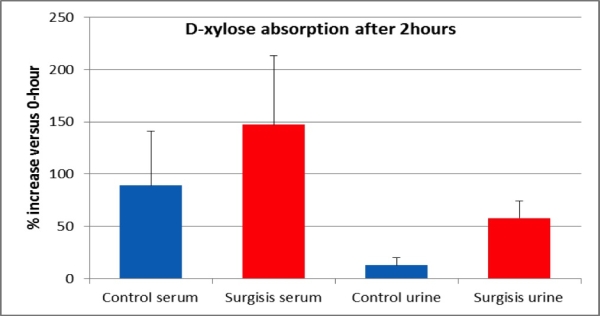Creation of a Functional Bio-Artificial Intestinal Segment in Rats
Surgery, UTMB, Galveston, TX.
Meeting: 2015 American Transplant Congress
Abstract number: B48
Keywords: Bioengineering, Intestinal transplantation
Session Information
Session Name: Poster Session B: Cell Transplantation and Cell Therapies
Session Type: Poster Session
Date: Sunday, May 3, 2015
Session Time: 5:30pm-6:30pm
 Presentation Time: 5:30pm-6:30pm
Presentation Time: 5:30pm-6:30pm
Location: Exhibit Hall E
Short bowel syndrome is caused by reduced intestinal length and insufficient absorption. TPN may improve life expectancy, but is potentially associated with severe complications and poor quality of life. Intestinal transplantation is potentially curative but its use is still limited by the need of potent immunosuppression and by a high rate of infections and shortage of ideal donors.
A new therapeutic approach consists in creating a bio-engineered segment of intestine. Using a decellularized biologic scaffold, we (and others) have previously developed a bio-artificial intestine that is morphologically similar to normal intestine. This neo-formed intestine is constructed with the intervention of naïve stem cells that repopulate the scaffold in vivo and over a period of time are transformed in different cell populations typical of normal intestinal mucosa. However, no studies are available to demonstrate that such intestinal segments possess functional characteristics necessary to render this structure a possible therapeutic application.
Male ACI rats weighting 150-200g were used for the study. We transplanted 2cm sections of acellular matrix (Surgisis, Cook Medical, US) in the anti-mesenteric border of the jejunum and ileum of 11 rats. Animals were studied after 4, 8 and 12 weeks, and neo-formed intestinal tissue with near-normal mucosa was seen starting at 8 weeks as expected from our previously developed model. We then isolated a segment of 2cm of intestine with preserved vascular supply and containing the neoformed mucosa. This was compared to similar intestinal segments isolated in un-operated control animals (n=6). D-Xylose solution was introduced in the lumen of the intestinal segments and 2 hours later urine and blood were collected to evaluate D-Xylose levels. Quantitative analysis was performed using Elisa. We observed an increased absorption (p<0.05) of D-xylose in the intestinal segment containing neo-formed mucosa.  With this study, we demonstarted for the first time that bio-artificial intestine obtained from decellularized biologic scaffold has functional characteristics of absorption confirming its potential for therapeutic interventions.
With this study, we demonstarted for the first time that bio-artificial intestine obtained from decellularized biologic scaffold has functional characteristics of absorption confirming its potential for therapeutic interventions.
To cite this abstract in AMA style:
Corsello T, Damiano G, Tuveri M, Montalbano M, Rastellini C, Cicalese L. Creation of a Functional Bio-Artificial Intestinal Segment in Rats [abstract]. Am J Transplant. 2015; 15 (suppl 3). https://atcmeetingabstracts.com/abstract/creation-of-a-functional-bio-artificial-intestinal-segment-in-rats/. Accessed December 27, 2025.« Back to 2015 American Transplant Congress
